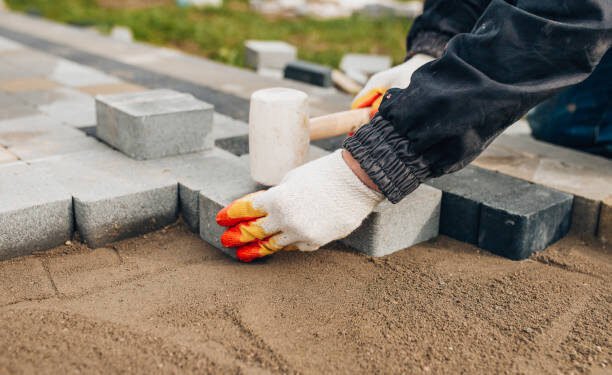So, you bought an older home. Congrats! You’ve got charm, character, and craftsmanship that newer builds only wish they had. You also, most likely, inherited squeaky floors, drafty windows, and a furnace that sounds like it’s straight out of a horror movie.
Welcome to the club.
The thing about older homes is—they’re lovable, but they’re also a lot. And unless you’ve got a vault of cash hidden behind that vintage wallpaper, you’ll need to be smart about which repairs you tackle first. That’s where prioritization comes in. And yes, it’s tricky. But with the right approach—and maybe a trustworthy house repair contractor on speed dial—you can take it one step at a time.
Let’s break it down in real-life terms, not some glossy HGTV fantasy.
1. Start with What Can Hurt You (or the House)
First rule of thumb? If it can hurt someone or cause serious damage to the house, it goes to the top of the list. No exceptions.
Think:
- Frayed wiring
- Unstable stairs
- Moldy walls
- Leaking roofs
- Gas line issues
This stuff isn’t just inconvenient—it’s dangerous. And fixing it isn’t about aesthetics; it’s about protecting your health, your family, and your investment.
Even if it’s not visually obvious, don’t ignore the subtle red flags. That weird burnt smell from an outlet? Yeah, call an electrician. If you’re in Massachusetts, there are plenty of seasoned contractors in Boston MA who specialize in older homes. These folks have seen it all—from knob-and-tube nightmares to crumbling chimneys.
2. Deal with Moisture Before It Deals with You
Water’s sneaky. It doesn’t knock. It creeps in and wreaks havoc—slowly, quietly, and expensively.
So if you notice any of these?
- Water stains on ceilings or walls
- Damp basement corners
- Musty smells (especially in older crawlspaces)
- Bubbling paint
- Rusty window frames
It’s time to act. Fast. Roof repairs, drainage fixes, foundation sealing—none of them are sexy, but they’ll save you thousands down the road.
A good home repair expert will be able to trace moisture problems to the source. Don’t just slap on a coat of paint and hope for the best. That’s like putting a band-aid on a broken pipe.
3. Think Energy Efficiency (Before Winter Reminds You Why)
Ah, New England winters. Beautiful to look at, brutal to live through—especially if your insulation hasn’t been touched since the 1960s.
Let’s be real: heating bills are no joke. If your home feels like a wind tunnel in January, it might be time to:
- Upgrade the insulation (attic, walls, crawlspace)
- Seal windows and doors
- Replace drafty old windows
- Service or replace your HVAC system
Some updates can wait. These? Not so much—especially if you don’t enjoy shivering under five blankets every night.
Many contractors in Boston MA are familiar with these energy-efficiency pain points and can recommend budget-friendly ways to winter-proof your space. There are even local rebates and programs to help cover some of the cost.
4. Tackle the Functionality Fails
Here’s where things start to feel personal. Your house may not be crumbling, but the little things are adding up:
- Doors that won’t close
- A toilet that runs (and runs)
- Outlets that don’t work
- A sink with zero water pressure
- Floors that dip just enough to make you question reality
These are the matters that slowly power you bananas. They might not be emergencies, however they effect the way you live inside the domestic every unmarried day. Fixing them doesn’t simply make the residence feature better—it makes you feel better too.
And right here’s the kicker: lots of those fixes are cheaper than you’d assume. A correct house repair contractor can knock out some of these annoyances in a single go to, mainly if you package them into one appointment.
5. Cosmetic Projects: Yes, But Not Yet
Let’s talk about the fun stuff: kitchens, toilets, lights, paint colors, that clawfoot bath you’ve been eyeing. You’ll get there—just not yet.
When the bones of the residence are stable, and you’re now not struggling with mildew, drafts, or faulty wiring, then you could dive into beautifying.
But in case you blow your budget on subway tile and ultra-modern furniture before addressing foundational problems, you’ll regret it. Promise.
Still, it’s okay to tackle small cosmetic things that deliver you pleasure, mainly in the event that they’re low-fee:
Swapping out dated hardware
A fresh coat of paint
New curtains
Installing dimmers or better lights
These little upgrades can enhance morale at the same time as you keep for larger renovations.
6. Make a Plan (Then Be Flexible)
Okay, so that you’ve got your listing. Now what?
Here’s a simple prioritization approach:
Immediate threats (fire risks, leaks, health dangers)
Structural + useful upkeep
Efficiency upgrades
Livability enhancements
Aesthetic upgrades
Not the whole thing wishes to be accomplished this yr. Some matters might circulate up or down the listing based totally on weather, available funds, or even your mood.
Don’t get paralyzed looking to repair the entirety right away. A nicely-cherished home is not often “done”—and that’s form of the splendor of it.
Finding the Right Help: Why a Good Contractor Matters
You can’t (and shouldn’t) do it all yourself. That’s where a reliable house repair contractor comes in. The good ones aren’t just handy with tools—they’re your allies in creating a livable, lovable home.
Here’s what to look for:
- Licensed and insured (non-negotiable)
- Familiar with older home quirks
- Willing to explain things without jargon
- Transparent with pricing
- Local references or reviews you can verify
If you’re in Massachusetts, check out contractors in Boston MA who specialize in restoration and historic properties. You want someone who respects the bones of your house while bringing it into the modern age.
A Personal Note from One Old-Home Owner to Another
When we moved into our 1940s cape, we had a cracked foundation, 50-year-old wallpaper in every room, and a furnace that looked like a time machine. It felt overwhelming—like we’d bought a full-time job, not a home.
But we made a list. Took a deep breath. Called in the pros when it counted. And over time, the house started to feel less like a project, and more like a place we belonged.
Sure, it still creaks. But now, it creaks in our rhythm.
Final Thought
Prioritizing repairs in an older home isn’t about being perfect—it’s about being practical. Focus on what keeps your home safe, dry, and functional. For the rest, take it as it comes—and when you need expert help, trusted contractors in Boston MA can guide you through the process with skill and experience.
And when in doubt? Ask for help. Whether it’s a neighbor, a fellow homeowner, or a reputable house repair contractor, you’re not in this alone.
Because in the end, it’s not just about fixing things—it’s about building a home that works for you.






